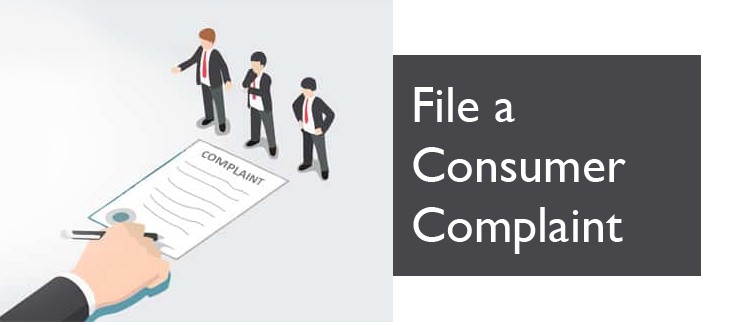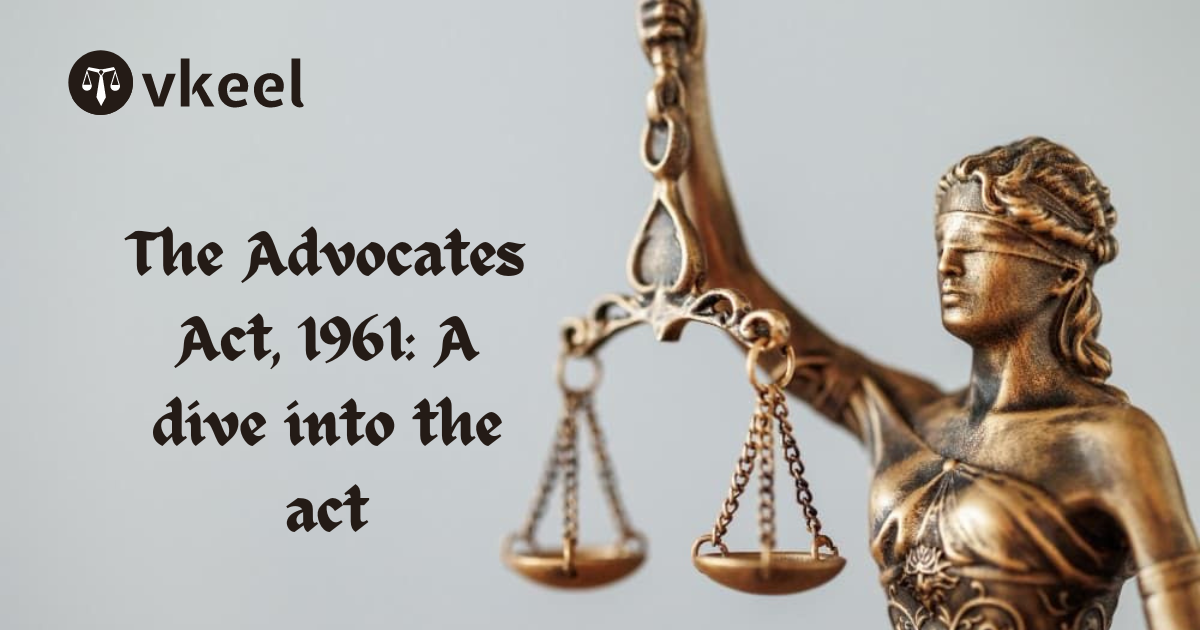“Online Filing” of Consumer Complaint
By Kishan Dutt Kalaskar
A Consumer is the backbone of the Indian Economy by purchasing the goods and services provided to them; therefore, it is necessary to protect their interests. It is the right of the consumers to receive standard quality products. But in certain situations, these consumers become the victim of the profound deficiency of goods and services. Thus a Consumer Court was established under Consumer Protection Act, 1986 to provide timely and effective adjudication of disputes connected to Consumers. The Consumer Courts are formed at three levels: District, State, and National Level, depending upon the monetary valuation fixed by Law.
The Consumer Protection Act, 2019, got the presidential assent on 9th August 2019, and it came into effect from 20th July 2020, replacing the old Consumer Protection Act, 1986. For the speedy and effective disposal of consumer cases, the New Act introduced online filing of complaints and meditation proceedings.
Consult with: Top Lawyers of India
Who can file a complaint in a Consumer Court?
- A consumer [The person who has purchased goods or has availed some services for personal use only in exchange for money]
- Voluntary consumer association Any registered association under the Companies Act, 1956, or under any other law
- One or more consumers who have the same interest
- In cases of death of a consumer, his legal heir or representative.
- The Central or the State Government
The procedure to file a complaint in the Consumer Court
Step 1: Intimation via Notice
It is advisable for the aggrieved party to send a notice to the opposite party before filing a complaint to communicate the Complainant’s intentions about the deficiency in service or defects in goods. This notice attempts to settle the dispute without approaching the court, i.e., if the opposite party is willing to offer any remedy for the damage caused.
Step 2: Draft the Consumer Complaint
If the opposite party provides no remedy, then a formal complaint is filed under the Consumer Protection Act, 1986. This step can even be done without a lawyer. These details must be specified in the formal Complaint:
- Name, description and the address of the Complainant (s) and the Opposite Party or parties.
- Cause of Action, the approximate date, time and venue.
- Relevant facts relating to the cause of action.
- The Relief or Remedy claimed by the Complainant in accordance with the facts of the case.
- Signature and Verification by the Complainant or his authorized agent.
Talk with: Best Lawyers of India
Step 3: Attaching Relevant Documents
All the relevant documents and material evidence supporting the case must be attached. These documents may include:
A receipt of delivery, copy of the bill, Warranty/Guarantee certificates, record of online booking of the goods bought, packaging of a product, a copy of the written Complaint and notice sent to the seller/manufacturer.
Step 4: Appropriate Forum
Decide the forum in accordance with the pecuniary jurisdiction for filing the Complaint, which is estimated in reference to the total valuation of goods and services fixed by Law.
Step 5: Court Fees
The requisite Court fee has to be paid along with the Complaint filed depending on the forum. This fee depends on the value of goods bought and the amount of compensation sought.
Step 6: Submit an Affidavit
The Complainant also has to submit an affidavit in the Consumer Court. The affidavit must include the facts presented and the statements made by the consumer are true to his knowledge.
Consult with: Top Lawyers of India
How to approach Consumer Forum
How to approach the District Consumer Forum?
Here, the Complaint can be made on a plain notarized paper and can be filed by a complainant or authorized agent. The Complainant needs to file four additional copies for each party. The requisite Court Fee is Nil for people holding Antyodaya Anna Yojana cards for valuation of suit upto 1 lakh and in other cases is Rs. 100. The court fee is Rs 200 for suits valued upto 5 lakhs, Rs 400 for suits valued upto 10 lakhs, and Rs. 500 for value upto Rs 20 lakhs. This fee has to be submitted through a demand draft to the President, Consumer Disputes Redressal Forum (name of) district.
How to approach the State Consumer Forum?
Here, the Complaint must be filed, deciding the pecuniary jurisdiction limit fixed by Law. The Court Fee is Rs 2,000 for complaints valued between Rs 20 lakhs and Rs 50 lakhs and is Rs 4,000 for value upto Rs 1 Crore. This fee is deposited via a demand draft in favour of the Registrar, (name of) State Commission payable in that particular State only.
How to approach the National Consumer Forum?
Here, the Complainant can either file a complaint directly, if it is within the pecuniary jurisdiction or file an appeal from the order of State Forum within 30 days of passing of the order. The requisite fee for filing a complaint is Rs 5,000, and the demand draft is to be made in the name of The Registrar, National Consumer Disputes Redressal Commission, but no fee is required for appealing before State or National Commission.
Complainant may approach the Supreme Court against the orders of the National Forum within a period of 30 days of the passing of the order.
“Online Filing” of Consumer Complaint
The New Act of 2019 introduces the option of “Online Filing” of Consumer Complaint for speedy disposal of cases. The Institution of Consumer Complaint happens in a similar way as mentioned above, but everything is performed online:
Talk with: Best Lawyers of India
Step 1: Issuance of Notice
This notice is sent to the opposite party before filing the formal Complaint.
Step 2: Determining the Jurisdiction
It is necessary to file the Complaint within the Pecuniary and Territorial Jurisdiction.
Step 3: Submission of Complaint
The Complainant can register complaints on https://consumerhelpline.gov.in/. Here, the Complaint can be submitted in the form of Writing or Online. The Complainant will receive his login credentials and then file the Complaint by filing in all the necessary details. He can even file through the Mobile App NCH, Umang or Consumer App.
Fees for the Complaint can be submitted through the online payment portal.
Step 4: Contents of the Complaint
The Complaint must contain all the necessary information attaching the relevant documents as discussed above.
Step 5: Limitation for filing Complaint/Appeal:
The Complainant must file the Complaint before the District Commission within two years from the date of the dispute. The appeal must be filed within forty-five days from the date of order of the District Commission before the State Commission. Further, an appeal to the National Commission must be made within thirty days from the date of the order from the lower forum.
Mediation Proceeding
The New Act of 2019 introduces an Alternative Dispute Resolution Mechanism for consumer cases’ speedy and effective redressal.
The Initiation of Mediation Proceedings can be done if the commission is convinced that there is a probability of settlement of the dispute, then it can be sent to the Mediation Cell. This request can be made to District, State or National Commission mentioning the nature of the dispute, details of the parties involved, amount of dispute, relief sorted and Proposal for appointment of Mediator [Qualification, Language, experience, etc.]
Consult with: Top Lawyers of India
Conclusion
The Consumer Courts have proved to be the finest ways to protect the interests of the consumers and provide them with a remedy by addressing their grievances. It is a very cost-effective and easy measure to file a complaint as compared to the other forms of litigation. The territorial jurisdiction plays an important role in deciding which district forum a consumer can approach. The Government has taken a huge step in speedily resolving consumers’ grievances by introducing the online form of Complaint through the New Act of 2019. During the pandemic, this online measure can prove to be a very user friendly and productive procedure. The introduction of Alternative Dispute Resolution Mechanism through Mediation proceedings was a step towards achieving a peaceful settlement of dispute between the parties involved, which would have had a huge impact on both the service provider and the consumer in the long term. Therefore, this resolution mechanism through Mediation had saved the parties from the long, tedious procedure by helping them resolve the issue in the initial stage itself.
Disclaimer:
The information provided in the article is for general informational purposes only, and is not intended to constitute legal advice or to be relied upon as a substitute for legal advice. Furthermore, any information contained in the article is not guaranteed to be current, complete or accurate. If you require legal advice or representation, you should contact an attorney or law firm directly. We are not responsible for any damages resulting from any reliance on the content of this website.












